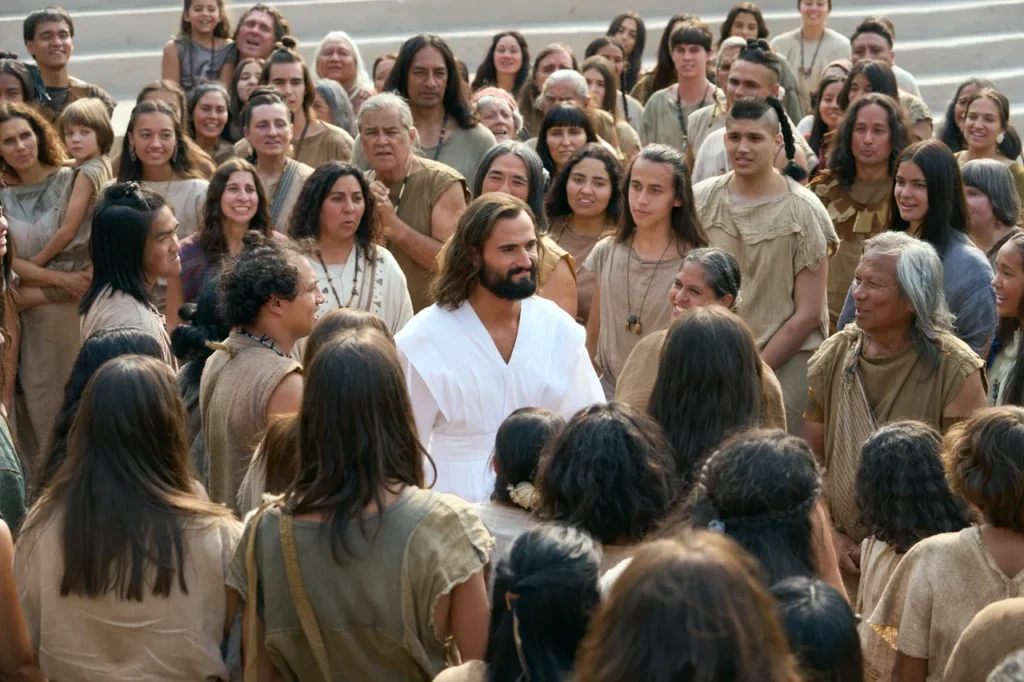
FAIR is a non-profit organization dedicated to providing well-documented answers to criticisms of the doctrine, practice, and history of The Church of Jesus Christ of Latter-day Saints.
Scripture Study Resources: Supplement Your Come, Follow Me Study » Study Resources for the Doctrine & Covenants and Pearl of Great Price » Week 14 Jesus Christ Will Gather His People

This metaphor illustrates Christ’s deep love and desire to protect and gather His people. Just as a hen gathers her chicks to shield them from danger, Christ invites all to come unto Him for spiritual safety, guidance, and peace. His gathering work is ongoing, and He calls us to assist in it. (Doctrine and Covenants 29:2)
President Russell M. Nelson has taught that the gathering occurs wherever Saints live and build Zion in their own nations. Sharing the gospel, strengthening testimonies, and serving others all contribute to this gathering. Each person who chooses to follow Christ is part of this grand work in preparation for His Second Coming. (Doctrine and Covenants 29:7–8)
Each step in the Plan of Salvation is essential for our eternal progress. The Fall of Adam and Eve made mortality and agency possible, while the Atonement of Jesus Christ provides redemption from sin and death. Understanding this plan helps us trust God’s purposes and find meaning in our lives. (verses 31–50)
This teaches that even commandments we view as temporal—such as caring for our bodies or working hard—have spiritual significance. Recognizing that everything in life is connected to our eternal purpose helps us obey God with greater faith and perspective. (Doctrine and Covenants 29:34)
The Fall was not a mistake; it was a necessary step in God’s plan. Though it brought physical and spiritual death, it also allowed for growth, learning, and joy. Jesus Christ’s Atonement overcomes the effects of the Fall, offering us resurrection and eternal life. (Doctrine and Covenants 29:39–43)
Instead of seeing the Fall as purely negative, Adam and Eve rejoiced because it opened the way for redemption. Their example encourages us to view challenges as opportunities for growth and to rely on Christ for strength. (Moses 5:10–12)
This revelation reinforced the principle that only the prophet receives revelation for the Church. It also laid a doctrinal foundation for the Plan of Salvation, emphasizing Christ’s role in gathering and redeeming His people.
Just as early Saints sought revelation for clarity, we are encouraged to seek divine guidance today. The principles taught in Doctrine and Covenants 29 help us understand our role in God’s plan and the importance of gathering to Christ in preparation for His Second Coming.
If you have questions on this week’s reading, please email your questions to us here.
Practical solutions for someone in faith crisis:
Action Step: Study and ponder a part of the Plan of Salvation that brings you peace (e.g., the Atonement, resurrection, or final judgment).
Understanding that mortality is part of God’s divine design helps us endure difficulties with faith. Trials and opposition are not meaningless; they serve a purpose in our growth and eternal progression.
Encouraging Thought:
Action Step: Look for one opportunity this week to invite someone to learn more about Jesus Christ, whether through conversation, sharing a scripture, or inviting them to church.
The Lord has commanded us to help gather His people before His Second Coming. When we participate in missionary work, we strengthen our testimonies and help others receive God’s promised blessings.
Encouraging Thought:
Life’s uncertainties can cause fear, but Christ’s invitation to gather to Him offers reassurance. Just as a hen protects her chicks, He offers us love, security, and healing.
Encouraging Thought:
Come unto Christ, and He will give you rest. No matter what storms rage around you, His arms are open, ready to gather and protect you.
Objective: Help learners understand how Jesus Christ gathers and protects His people.
A picture or video of a hen gathering her chicks, a blanket or umbrella, scriptures.
Follow-Up Question: What specific actions can we take to gather to Christ and help others do the same?
Objective: Help learners visualize the key elements of the Plan of Salvation.
Printed or hand-drawn puzzle pieces representing pre-mortal life, earth life, the Fall, Atonement, resurrection, and final judgment.
Follow-Up Question: How does knowing God’s plan help us make better daily choices?
Objective: Teach the importance of gathering Israel through missionary efforts.
Small slips of paper with different missionary scenarios, a whiteboard or chalkboard.
Follow-Up Question: How can we naturally and effectively share the gospel in our everyday interactions?

FAIR is a non-profit organization dedicated to providing well-documented answers to criticisms of the doctrine, practice, and history of The Church of Jesus Christ of Latter-day Saints.
We are a volunteer organization. We invite you to give back.
Donate Now